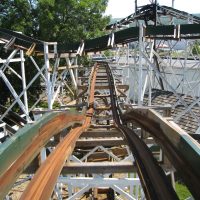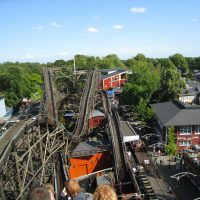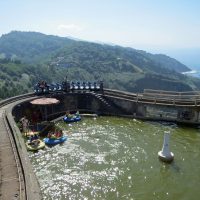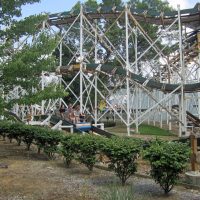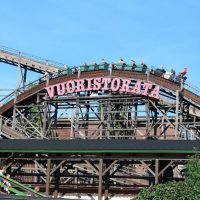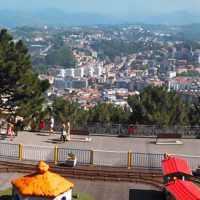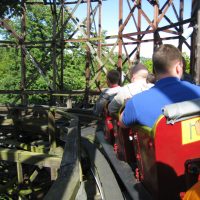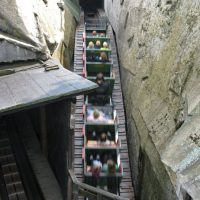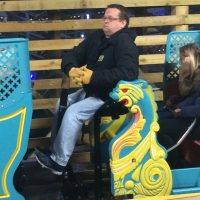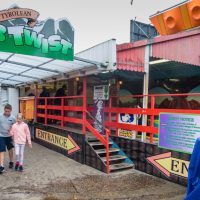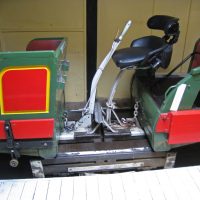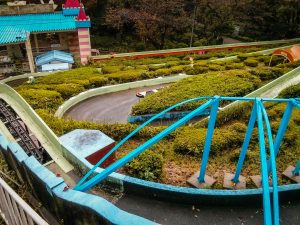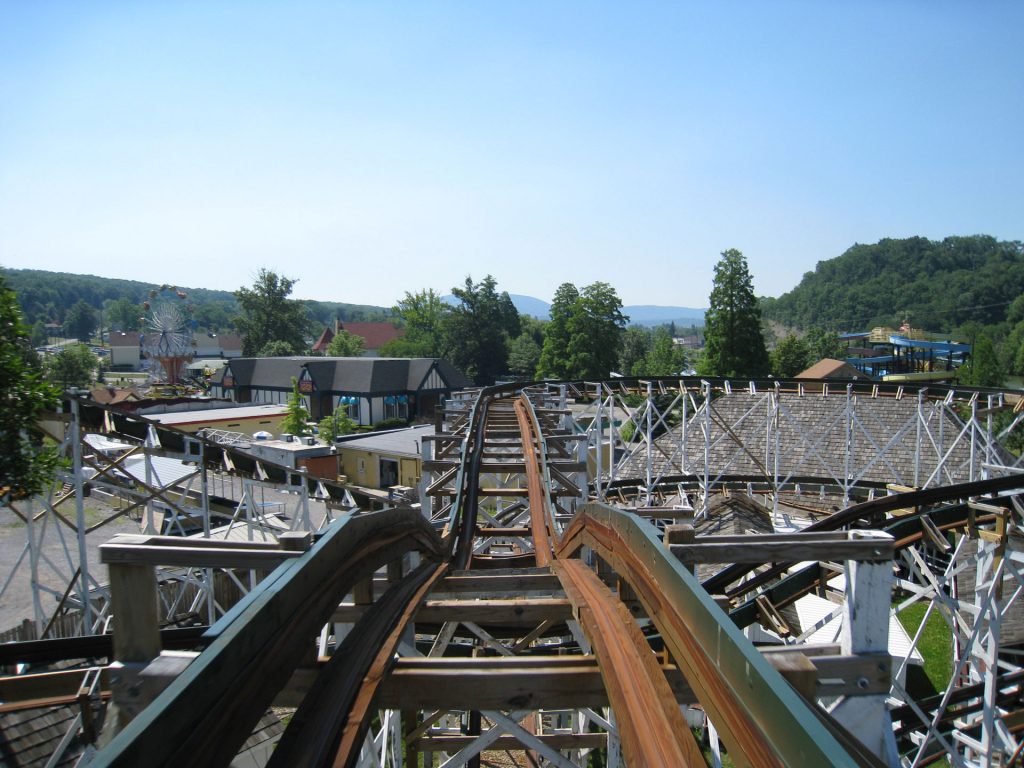
Before the invention of “upstop wheels”, coaster cars and trains weren’t attached to the track by anything other than gravity. A side friction coaster is any wooden coaster where the car is essentially in a kind of trough, with wheels underneath and to the side. The side wheels stop the car from grinding to a halt as it goes around a corner.
Today, there are two main types of Side Friction coasters: Scenic Railway and Figure Eight, or “Bobsled” coasters. These coasters date back to the late 1800’s so you’ll be hard pressed to find either, but a few are still around.
Figure Eights
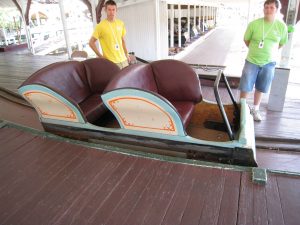
As the name suggests, these coasters have track laid out in the shape of the numeral 8. They were also called Bobsled Coasters due to the design and look of the car (photo), however they are not to be confused with actual Bobsled Coasters that travel in semicircular shaped troughs or chutes.
The oldest coaster in the world – Leap The Dips at Lakemont Park in Pennsylvania, USA – is a Figure Eight coaster. It opened in 1902 and is the only Figure Eight coaster still in operation.
Scenic Railways
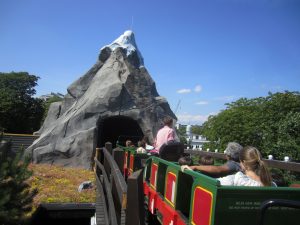
A Scenic Railway is a form of Side Friction coaster. The trains aren’t held onto the track in any way. However, Scenic Railways are the oldest surviving type of thrill coaster left. Unlike a normal Side Friction coaster where the speed has to be constantly kept low, a Scenic Railway has a “brakeman”. Seated in the middle of the train, the brakeman slows the ride when it’s running too fast to go over a hill or around a corner.
Obviously this takes a lot of skill and practice, the riders lives are in his hands after all. A good brakeman can make a Scenic Coaster exceptionally thrilling for their age by keeping the speed up, but safe.
The reason they’re called Scenic Railways? They used to be put inside massive fabricated structures showing scenes from around the world.
In 2010 the original trains on Rutschebanen at Bakken in Denmark were replaced with new trains from KumBak that do not require a brakeman and a computer sensor magnetic braking system was installed to control the speed of the trains. The video listed in the examples below was filmed with the brakeman trains. We also have an updated on-ride video that shows the new braking system on the track.
Examples:
Rutschebanen at Bakken, Denmark
Vuoristorata at Linnanmäki, Finland
Scenic Railway at Dreamland Margate, UK
Variations

is one Scenic Railway still operating that is not wooden called Montaña Suiza at Parque de Atracciones Monte Igueldo in San Sebastián, Spain. This Scenic Railway runs on steel track that is bolted into the concrete trough atop a wall that circumvents the summit of Monte Igueldo.
Example:
The Slope Shooter at Higashiyama Zoo and Botanical Gardens in Japan is a one off coaster that has single cars that free coast through flat concrete troughs. In addition to the wheels on the bottom, sides and front of the car, there are wheels attached to the trough walls at strategic locations that help keep the cars moving through corners without getting stuck.
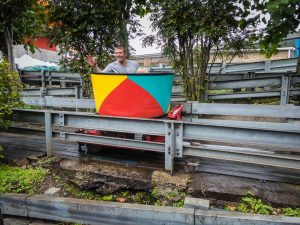
This Horace Cole creation is similar to the now defunct Virginia Reel coasters, except Tyrolean Tubtwist at Joyland Children’s Fun Park in the UK is powered and much smaller. The concrete base of the channel has two metal strip “tracks” that are used to power the electric motor in each tub that allows it to rotate as it travels along mountainous scenery spinning and changing direction unexpectedly throughout the duration of the ride.
